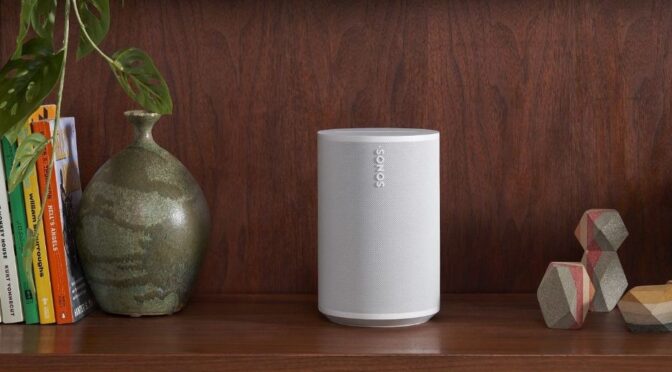So I recently expanded my Sonos system with a Sonos Ray soundbar, on a good deal. It is primarily for replacing my TV sound but can also play music in the same way as other Sonos speakers.
First Impressions
The first impression was positive with a reassuring weight and heft to it. It is, after all, Sonos’s smallest soundbar but feels of higher quality compared to other brands’ entry/mid-level soundbars I have looked at in-store. The sleek and minimalist design, available in black or white finishes, easily complements various home theater setups.
Installation Challenges
The installation started easy by turning the Ray on and opening the Sonos S2 app. It paired through sound, connected to the Wi-Fi, and then it should just update in the app before it could start. However, I ran into the dreaded 1002 error, preventing the update and addition to the system. After several attempts, and some Stoic guidance on overcoming adversity, the solution involved turning off the rest of the system, restarting the Wi-Fi router, factory resetting the Sonos Ray (keep back button pressed on startup until white/orange blinking), and performing another setup. I had to update it through the Windows Controller app, which only recognized the Ray after these steps. After restarting the S2 Android app and turning on the rest of the system, everything worked as intended.
Usage and Impressions
I connected the optical cord from the TV output to the Ray input, activated the optical output on the TV, and opened the Ray speaker in the Sonos app. The app provides an option for TV installation that checks the input signal. Pairing the TV remote volume controls was straightforward by enabling IR in the app and pairing the speaker to the TV remote.
The sound quality is a noticeable step up from the Samsung TV sound. The Ray delivers clear and punchy audio, with particular strength in vocal clarity, making dialogue easy to understand even in busy soundtracks. Despite its compact size, the Ray’s focused sound forward allows it to perform well even when placed inside a TV cabinet.
Features and Connectivity
The Sonos Ray relies solely on an optical input for connecting to the TV, lacking HDMI ARC or eARC connectivity. This limits its compatibility to Stereo PCM, Dolby Digital 5.1, and DTS Digital Surround sound formats, which might be a consideration for those seeking the latest audio technologies like Dolby Atmos. The Ray’s wireless capabilities enable seamless integration into a multi-room audio system via Wi-Fi, Apple AirPlay 2, Spotify Connect, and Tidal Connect.
The Ray can be expanded with additional Sonos speakers, such as the One SL rear speakers or the Sonos Sub, for a multi-channel surround sound experience. Sonos also suggests using the more affordable Symfonisk IKEA speakers for expansion.
Sound Quality
Inside the soundbar are four forward-facing drivers powered by four class D amplifiers. Two centrally positioned elliptical mid-woofers and two tweeters with acoustic lenses enhance vocal clarity and create a sense of spaciousness. While some reviewers note a relatively narrow soundstage compared to larger soundbars, the Ray’s design focuses sound forward to maintain audio quality.
Design and Usability
The Ray features capacitive touch buttons on the top for easy control. It does not include built-in microphones, so voice assistant controls are not available. For iOS users, the Ray supports Sonos’s Trueplay room calibration, which optimizes audio output based on room acoustics.
Technical Specs
The Sonos Ray measures 7 x 56 x 10cm and weighs 2.8kg. It features four forward-facing drivers: two elliptical mid-woofers and two tweeters. Bass frequencies are managed by two low-velocity curved bass reflex ports, aiming to deliver a weighty low end without distortion. The device does not include an Ethernet port, relying instead on Wi-Fi for connectivity. Its optical input supports SPDIF/optical connections, essential for connecting to the TV.
Software Experience
While the sound quality is impressive, the Sonos software has caused some irritation. Occasionally, it does not recognize the speaker as active, losing settings like enhanced speech and more bass in the equalizer. It also sometimes fails to recognize an active optical input, though the speaker still delivers good TV sound. Hopefully, these issues will be addressed in future software updates, but it’s clear that Sonos has room for improvement in its software stability.

















 You can control the speakers with the App for
You can control the speakers with the App for